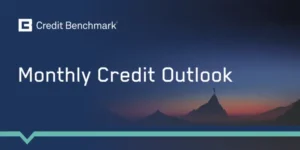
Monthly Credit Outlook: March 2023
The March Monthly Credit Outlook looks at recent credit trends and highlights seen in the consensus dataset. This month, stubborn inflation risks steeper global credit deterioration.

The March Monthly Credit Outlook looks at recent credit trends and highlights seen in the consensus dataset. This month, stubborn inflation risks steeper global credit deterioration.

Global Corporates have returned to a negative credit balance, ending their 19-month positive run. Global Financials have now had four months without a positive credit balance. This negative shift is being driven by a number of Global Sectors.

Renewable energy is at the centre of efforts to tackle climate change, but there have been setbacks to growth. 80%+ of energy demand is still met by fossil fuels, with fossil fuel companies reporting record profits as global energy prices spike. In the past two years, renewable credit risk has deteriorated and traditional energy has improved. However, there are some signs that the credit tide may be turning.

The February Monthly Credit Outlook looks at recent credit trends and highlights seen in the consensus dataset. This month, credit risk is elevated but some positive surprises may be possible.

3G has been a major legacy network overhead and consumer of spectrum bandwidth in the US. But as 5G moves into high gear the Big 3 wireless carriers needed to reallocate capacity to fully support the 5G network, and free up resource for the development of 6G and beyond. With the 3G burden removed, the sector’s Big 3 are better placed to invest in future technologies with less strain on balance sheets.

Both US Consumer Services and Goods are currently hovering around neutral CCI scores. But the Black Friday stats so far suggest a good December, at least for consumer goods; if that momentum can be maintained we could see more positive CCIs across the Consumer sector.

With more teams playing than ever before (and a further expansion planned for 2026) the World Cup might provide some real surprises. But for a quadrennial contest that has been around for over 90 years, the list of winners is a bit repetitive. This insight compares average Sovereign Credit Consensus Rating for each of the defined Winners, Determined and Unqualified groups.

Pension funds are traditionally well capitalised and usually considered investment grade. Many of the companies that sponsor those funds are weaker credits, and a significant number are non-investment grade. This means that some of the largest DB pension funds in the UK cannot rely on their sponsors for cash support to meet margin calls.

COP27 needs to answer one question: is a declining standard of living the price of a sustainable future? Countries with weaker credit ratings will typically see more impact of climate change – with some exceptions. This report compares Sovereign credit against climate impact risk.

Global property is at a crossroads. The build-to-rent sector is strengthening as urban rents spike across the world, but rising mortgage rates are hitting starter and family home markets. In the corporate world, North American Real Estate Investment Trusts (REITs) have improved since early 2021, but Industrial & Office REITs are showing signs of turning down as hybrid working persists.
Credit Benchmark brings together internal credit risk views from over 40 leading global financial institutions. The contributions are anonymized, aggregated, and published in the form of consensus ratings and aggregate analytics to provide an independent, real-world perspective of credit risk. Risk and investment professionals at banks, insurance companies, asset managers and other financial firms use the data for insights into the unrated, monitoring and alerting within their portfolios, benchmarking, assessing and analyzing trends, and fulfilling regulatory requirements and capital.
Please complete the form below to arrange a demo.